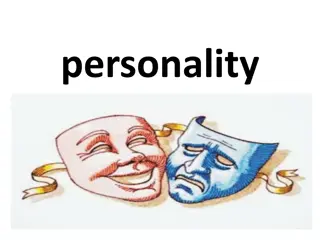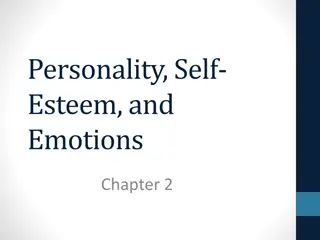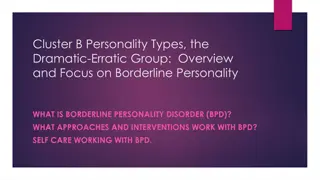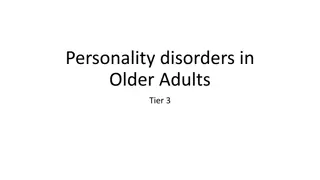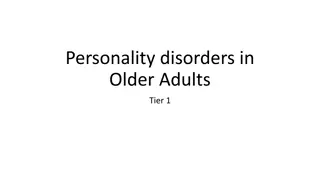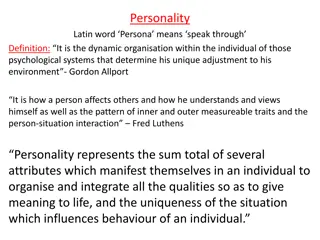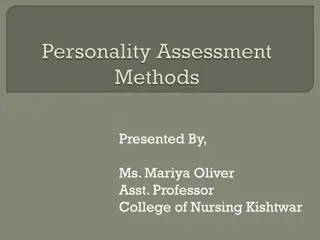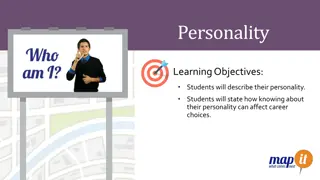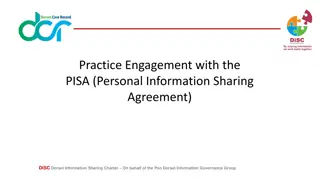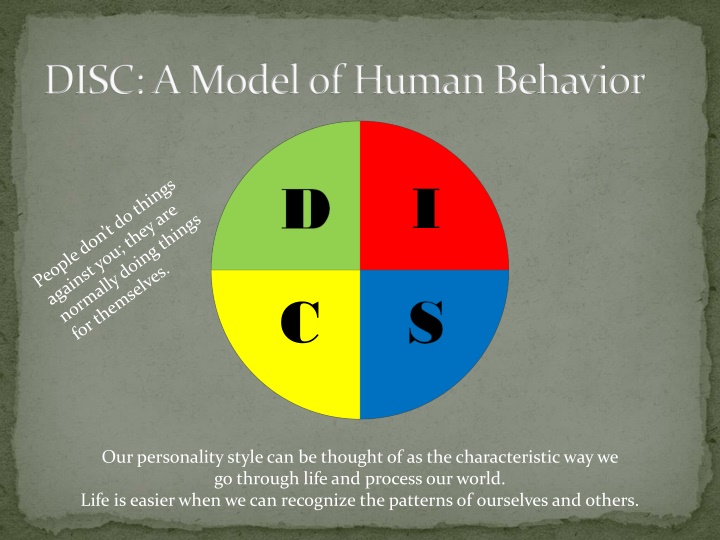
Human Behavior Styles and Personalities
Explore the DISC model of human behavior, which categorizes personality styles into four types: D (Drive), I (Influence), S (Steadiness), and C (Compliance). Discover how recognizing these patterns can help improve communication and interactions with others. Learn about the characteristics, preferences, and dislikes of each personality type to enhance your understanding and relationships.
Download Presentation

Please find below an Image/Link to download the presentation.
The content on the website is provided AS IS for your information and personal use only. It may not be sold, licensed, or shared on other websites without obtaining consent from the author. If you encounter any issues during the download, it is possible that the publisher has removed the file from their server.
You are allowed to download the files provided on this website for personal or commercial use, subject to the condition that they are used lawfully. All files are the property of their respective owners.
The content on the website is provided AS IS for your information and personal use only. It may not be sold, licensed, or shared on other websites without obtaining consent from the author.
E N D
Presentation Transcript
DISC: A Model of Human Behavior I C Our personality style can be thought of as the characteristic way we go through life and process our world. Life is easier when we can recognize the patterns of ourselves and others.
Pace Drive Outgoing/ Fast Paced Task Oriented People Oriented I Priority Drive C Reserved/ Slow Paced
See if you can temper. Judge Judy Robin Williams Dr. Christian Barnard~ 1st Heart Transplant
Working with the types: D Style D Types Don t Like: D Types Want You to Be: Quick Confident A Winner To the point Specific Motivated Indecision Talkers who don t produce Activities without a point Slow activities Lazy people Taking orders
Its not where you are, but where you are going that counts for D s From To Reckless Courageous Rude Outspoken Impatient Goal-oriented Pushy Results-oriented Domineering Independent Arrogant Confident Offensive Assertive Ruthless Competitive Controlling Leading
Working with the types: I Style I Types Don t Like: I Types Want You to Be: Fun Responsive Stimulating Positive Upbeat Enthusiastic Being ignored Being ridiculed Being isolated Doing repetitive tasks
Its not where you are, but where you are going that counts for I s From To Unrealistic Optimistic Manipulative Persuasive Unstable Passionate Gossipy Communicative Impulsive Spontaneous Directionless Involved Daydreamer Imaginative Purposeless Inspiring Egocentric Warm
Working with the types: S Style S Types Want You to Be: Kind Pleasant Caring Patient Understanding Gentle S Types Don t Like: Insensitivity Misunderstandings Surprises To be yelled at Sarcasm Being pushed
Its not where you are, but where you are going that counts for S s From To Unmotivated Relaxed Anxious Calm Indecisive Easygoing Spectator Collaborator Uncommunicative Good Listener Enabling Diplomatic Resistant Loyal Shy Compassionate Slow Systematic
Working with the types: C Style C Types Don t Like: C Types Want You to Be: Accommodating Accountable Structured Accurate Analytical Reasonable Being criticized Unnecessary interruptions Ambition without a plan Mistakes Mediocrity Sudden changes
Its not where you are, but where you are going that counts for C s From To Compulsive Orderly Unemotional Logical Rigid Consistent Prying Curious Fearful Cautious Picky Precise Perfectionist Excellence Worrisome Conscientious Easily Offended Teachable
How does this impact you as a team member? I C
How can you use this with the students that you support? I C
Reflections I C


